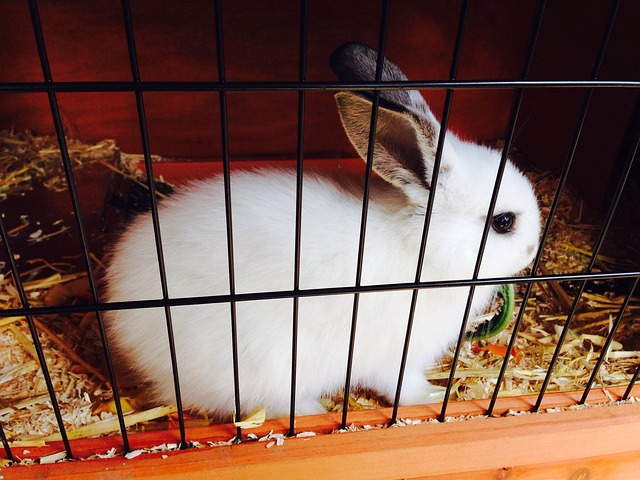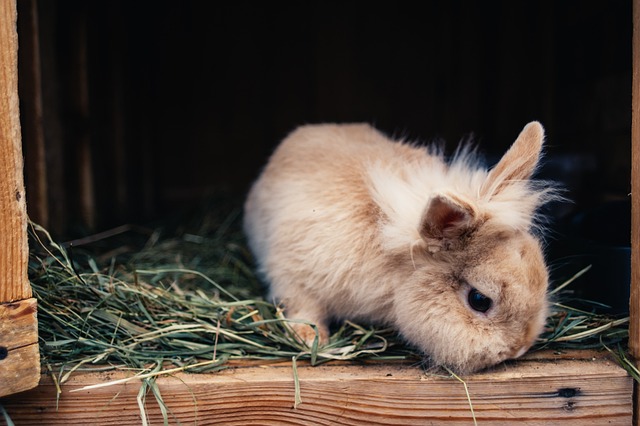Importance of Maintaining the Ideal Temperature for Rabbits

Rabbits, like many animals, are highly sensitive to environmental temperatures. Maintaining the ideal temperature for rabbits is crucial to ensuring their health and well-being. Factors such as physiological characteristics, housing conditions, and seasonal variations all play a significant role in determining the thermal comfort of these small mammals. In this article, we will explore the importance of optimal temperature regulation for rabbits, the factors that influence their thermal comfort, recommended temperature ranges for different environments, signs of heat and cold stress to watch for, as well as strategies and considerations for effectively managing temperature conditions to promote the optimal health of pet rabbits.
Importance of Maintaining the Ideal Temperature for Rabbits
- Introduction to Rabbit Temperature Needs
Rabbits may be fluffy balls of cuteness, but ensuring they are in the right temperature zone is crucial for their well-being. Just like Goldilocks, rabbits have a preference for temperatures that are not too hot, not too cold, but just right.
- Impact of Temperature on Rabbit Health and Well-being
Temperature plays a significant role in the health and happiness of rabbits. Fluctuations outside their comfort zone can lead to stress, illness, and even fatalities. Understanding and maintaining the ideal temperature for your fluffy companion is key to keeping them hopping with joy.

Factors Affecting Thermal Comfort for Rabbits
- Natural Physiological Factors
Rabbits have fur coats that provide insulation, but their ability to regulate body temperature is limited. Factors such as age, breed, and overall health can affect how well they cope with temperature changes.
- Environmental Influences on Rabbit Temperature
The environment plays a crucial role in rabbit comfort. Factors like humidity, ventilation, and direct sunlight can impact how rabbits respond to temperature variations. Creating a suitable living space is essential for their well-being.
Behavioral Responses to Temperature Changes
Rabbits have clever ways to cope with temperature shifts. They may seek shade, dig burrows, or huddle together for warmth. Understanding their natural behaviors can help you provide a comfortable environment even when the weather can’t make up its mind.
Optimal Temperature Range for Rabbits
- Recommended Temperature Range for Indoor Housing
For indoor rabbits, a temperature range of 60-70°F (15-21°C) is generally ideal. Avoid placing them near drafty areas or direct heat sources.
- Considerations for Outdoor Housing Environments
Outdoor rabbits need extra care during extreme temperatures. In hotter months, offer shaded areas and plenty of cool water. In colder weather, provide insulated shelters and bedding to keep them cozy and warm.
Signs of Heat Stress or Cold Stress in Rabbits
- Recognizing Symptoms of Heat Stress in Rabbits
Watch out for signs like panting, lethargy, and drooling, which indicate heat stress. Cooling measures like frozen water bottles or a fan can help in such situations.
- Identifying Signs of Cold Stress in Rabbits
Shivering, huddling, or reduced activity are telltale signs of cold stress in rabbits. Providing extra bedding, cozy hideaways, and maybe even a snug sweater can help them stay toasty during chilly spells.**Strategies to Regulate Temperature for Rabbits**
Heat Management Techniques
When the temperature starts to rise, rabbits can feel the heat as much as anyone in a fluffy fur coat can. To help your bunny stay cool, provide ample shade and ventilation in their living space. Placing frozen water bottles in their hutch or providing a cool, damp towel for them to lay on can also help them chill out.
Cold Weather Precautions and Solutions
When the mercury drops, rabbits need a cozy spot to snuggle up in. Make sure their hutch is draft-free and lined with plenty of hay for insulation. You can also offer them extra bedding or a small enclosed space like a cardboard box filled with hay for added warmth.
Choosing Suitable Housing for Temperature Regulation
When it comes to picking the perfect pad for your bunny, opt for a hutch that provides protection from both extreme heat and cold. Look for a well-ventilated yet sheltered space that allows for natural light but shields them from harsh weather conditions.
Enhancing Rabbit Comfort through Environmental Adjustments
To keep your furry friend content whatever the weather, add some creature comforts to their home. Soft bedding, cozy hideaways, and even a few toys to keep them entertained can all contribute to a happy and comfortable bunny, no matter the temperature.
Health Implications of Temperature Extremes for Rabbits
Impact of Heat Stress on Rabbit Health
When temperatures soar, rabbits can suffer from heat stress, which can lead to dehydration, heatstroke, and even death if not addressed promptly. Keep an eye out for signs of distress such as panting, lethargy, or drooling, and take immediate steps to cool them down if needed.
Consequences of Cold Stress on Rabbit Well-being
On the flip side, chilly weather can also pose risks to your bunny’s health. Cold stress can weaken their immune system, making them more susceptible to illnesses like respiratory infections.
Ensure they have a warm, dry shelter, and keep an eye out for any signs of shivering or huddling, which could indicate they’re feeling the chill.In conclusion, understanding and maintaining the ideal temperature for rabbits is essential for promoting their overall health and happiness.
By being aware of the signs of heat stress and cold stress, implementing suitable temperature management strategies, and providing appropriate housing and environmental conditions, rabbit owners can ensure that their furry companions thrive in a comfortable and safe environment.
Prioritizing the well-being of rabbits by regulating their temperature effectively will contribute to a fulfilling and harmonious relationship between pet and owner.
FAQ
- What is the ideal temperature range for rabbits?
The ideal temperature range for rabbits is between 60-70 degrees Fahrenheit (15.5-21 degrees Celsius). They can tolerate temperatures as low as 40 degrees Fahrenheit (4.4 degrees Celsius) and as high as 80 degrees Fahrenheit (26.6 degrees Celsius), but extreme temperatures can be harmful to their health and should be avoided. It is important to provide rabbits with a cool and comfortable environment to prevent heat stress or hypothermia.
- How can I tell if my rabbit is experiencing heat stress or cold stress?
There are several signs that can indicate whether a rabbit is experiencing heat stress or cold stress.
1. Body temperature: A rabbit’s normal body temperature is between 101-104 degrees Fahrenheit. If their body temperature is higher or lower than this range, it could be a sign of heat or cold stress respectively.
2. Panting or rapid breathing: Panting is a common sign of heat stress in rabbits. They may also breathe rapidly and have difficulty catching their breath. On the other hand, if a rabbit is experiencing cold stress, they may shiver and have shallow breathing.
3. Loss of appetite: Both heat and cold stress can cause a rabbit to lose their appetite. If they are not eating or drinking as they normally would, it could be a sign of stress.
- What are some effective strategies for regulating the temperature for rabbits in different environments?
1. Provide Adequate Shelter: Rabbits need a well-insulated shelter to protect them from extreme temperatures. In colder environments, the shelter should be draft-free and have enough bedding for the rabbits to burrow in. In hot environments, the shelter should have good ventilation to allow air circulation.
2. Adjust Diet: In colder environments, rabbits need more calories to maintain their body temperature. Increasing their food intake and providing high-calorie foods like hay and pellets can help keep them warm. In hot environments, rabbits should be fed more fresh vegetables and less hay to keep them hydrated and prevent overheating.
3. Use Heat Lamps or Heating Pads: In colder environments, heat lamps or heating pads can be used to provide a warm spot for the rabbits to snuggle up to. However, it’s important to monitor the temperature closely to prevent overheating.
What do you think?
Show comments / Leave a comment